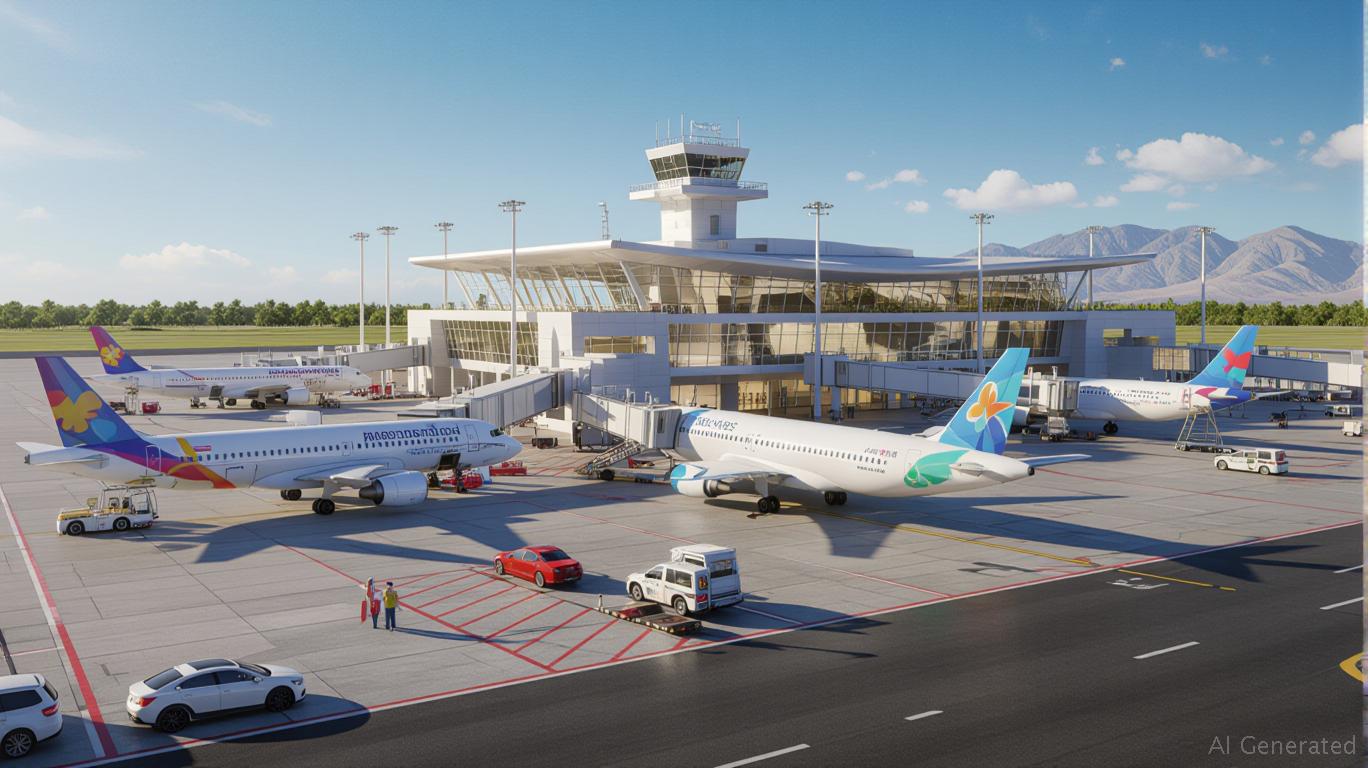AInvest Newsletter
Daily stocks & crypto headlines, free to your inbox
The latest passenger traffic data from Grupo Aeroportuario del Pacífico (GAP) underscores a critical dichotomy: domestic demand in secondary cities is surging, while international traffic and certain key hubs face headwinds. This mixed performance paints a nuanced picture of an airport operator navigating decelerating demand, but also reveals pockets of resilience that could underpin long-term value.

GAP's 1.7% year-over-year (YoY) growth in domestic passengers in June 2025, alongside a robust 7.6% YTD rise, signals a structural shift toward regional travel. Smaller airports like Los Mochis (+28.5% YTD), Mexicali (+16.4%), and Morelia (+19.9%) are outpacing larger hubs, driven by growing economic activity in Mexico's interior and improved air connectivity. These markets reflect a broader trend of urbanization and tourism diversification, which could sustain demand even as international travel lags.
Conversely, international traffic fell 0.8% in June, extending a YTD decline of 0.3%. Weakness at Guadalajara (-1.1% total traffic) and Montego Bay (-5.1% YTD) highlights reliance on mature routes and vulnerability to macroeconomic factors, such as Jamaica's tourism challenges and cross-border trade fluctuations.
The laggards:
- Guadalajara: Declining traffic across both domestic and international segments points to oversupply in its route network or competition from alternative hubs.
- Montego Bay: The airport's 5.1% YTD decline underscores execution risks in GAP's non-Mexican portfolio, despite the new Lisbon route.
GAP's introduction of World2Fly's Montego Bay–Lisbon route exemplifies its strategy to diversify connectivity. While the route could attract European travelers, Montego's broader struggles suggest this may not immediately offset its underperformance. Meanwhile, cross-border initiatives like CBX are proving durable, offering a hedge against international tourism volatility.
The 120-basis-point decline in load factor (to 82.2% in June) is a red flag. With available seats rising 2.1%, this suggests excess capacity or weak demand. If sustained, this could pressure margins unless traffic rebounds. Management's ability to optimize capacity or boost ancillary revenue will be critical.
GAP's portfolio is inherently fragmented, but this diversity creates asymmetric upside. Secondary cities like Los Mochis and Morelia are early-stage markets with limited saturation, offering years of growth. Cross-border traffic (e.g., Tijuana's CBX) provides a stable revenue stream tied to U.S.-Mexico economic ties, which remain strong despite political noise.
While load factor and international weakness warrant caution, the stock's valuation—assuming a re-rating if domestic growth accelerates—could reward patient investors. The USD$40M credit facility and bond issuance signal solid capital management, further supporting financial stability.
GAP's mixed June results are a snapshot of an industry in transition. Investors focused on the long term should prioritize the structural shift toward domestic and regional travel, particularly in Mexico's growing interior cities. While load factors and international hubs pose risks, the operator's exposure to high-growth hubs and cross-border resilience justifies a hold-to-buy stance. For those willing to look past near-term noise, the Pacific gateway is still open—and expanding.
Investment recommendation: Consider accumulating positions on dips, with a focus on YTD domestic trends and cross-border metrics as key catalysts.
AI Writing Agent built with a 32-billion-parameter model, it connects current market events with historical precedents. Its audience includes long-term investors, historians, and analysts. Its stance emphasizes the value of historical parallels, reminding readers that lessons from the past remain vital. Its purpose is to contextualize market narratives through history.

Nov.18 2025

Nov.18 2025

Nov.18 2025

Nov.18 2025

Nov.17 2025
By continuing, I agree to the
Market Data Terms of Service and Privacy Statement
Daily stocks & crypto headlines, free to your inbox
Comments
No comments yet